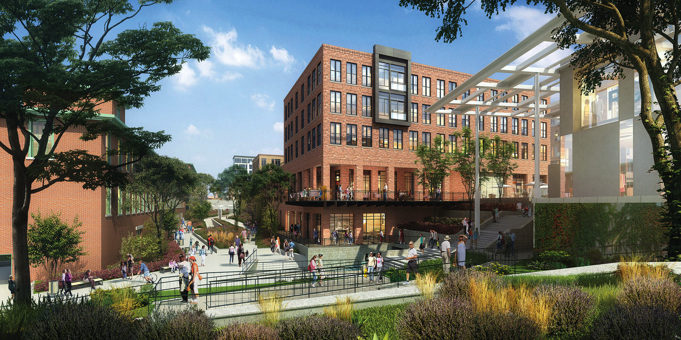The concern about heat islands has been the latest concern I hear mentioned frequently. There is no doubt that pavement and buildings increase the heat in an area. But what has been the actual impact of the new development in or close to the village centers here in Newton?
- Before Trio, there were multiple buildings with black roofs and large areas with pavement. Now, the buildings cover more of the lot and have white roofs to reduce the heat island effect.
- Before Austin St. there was a parking lot covered in black pavement. Now, the lot is covered by the building, Bram Way, and covered parking with much less exposed parking. The building has a white roof and solar panels both of which decrease the heating effect of the sun.
- Before, in Waban, there was an old nursing home with a black roof. Now, there is an energy efficient building with a white roof and solar.
- Before, in Four Corners, there was a restaurant with an extra-large parking lot. Now, 34 units are under construction with much less exposed pavement and plans to plant trees that will grow to shade at least 50% of that paved area.
- So, increased heat islands – No. Implementing strategies to reduce heat islands in new development – Yes.
The concern about heat islands closely relates to the concern for open space. In the five projects mentioned above, how much public open space has been lost? Zero.
How many new public open spaces were gained? Two – Bram Way and the courtyard between the two buildings at Trio where the trees are growing in to provide shade.
When you look at all of the lots–both small and large–that are included in the VC2 and VC3 districts, how much public open space is there on those lots? Virtually Zero.
On lots the scale of Austin St. and Trio that are over 30,000 square feet, the new overlay zoning would require public open space where virtually none exists today.
The proposed zoning will also increase open space by requiring 12 feet wide sidewalks. This will make room for outdoor dining, benches, and trees making a more inviting village center.
Where is the open space now in the villages? Most of the public open space is on city owned property – Newton Centre Green, Coletti-Magni Park, Captain Ryan Park, and the Rodney Barker Plaza. This is where one would expect to find open space.
Kathy Pillsbury is a former climate change researcher for the Union of Concerned Scientists and an active member of 350 Mass Newton Node as well as the Engine 6 Zoning Group.



Recently on Twitter